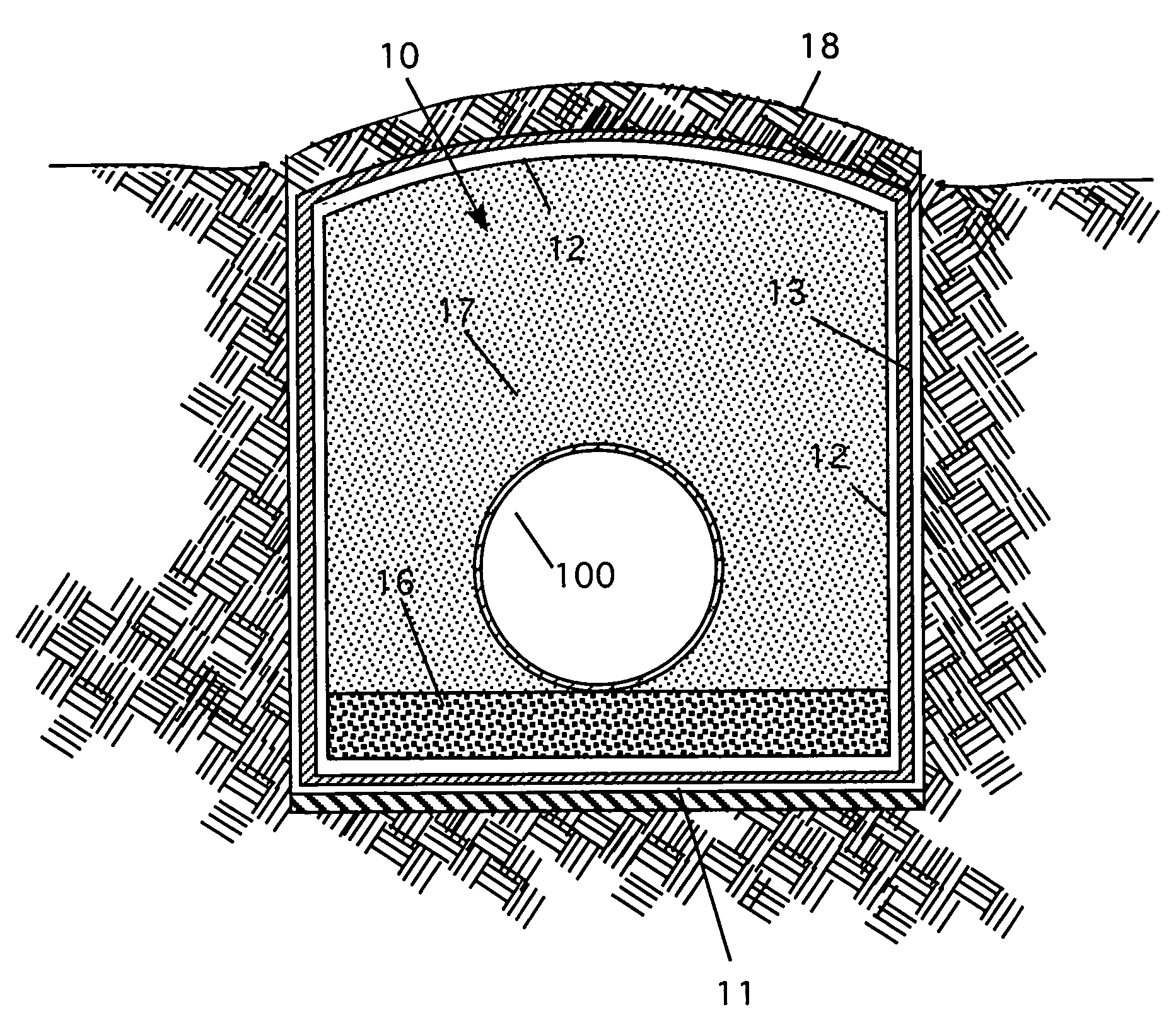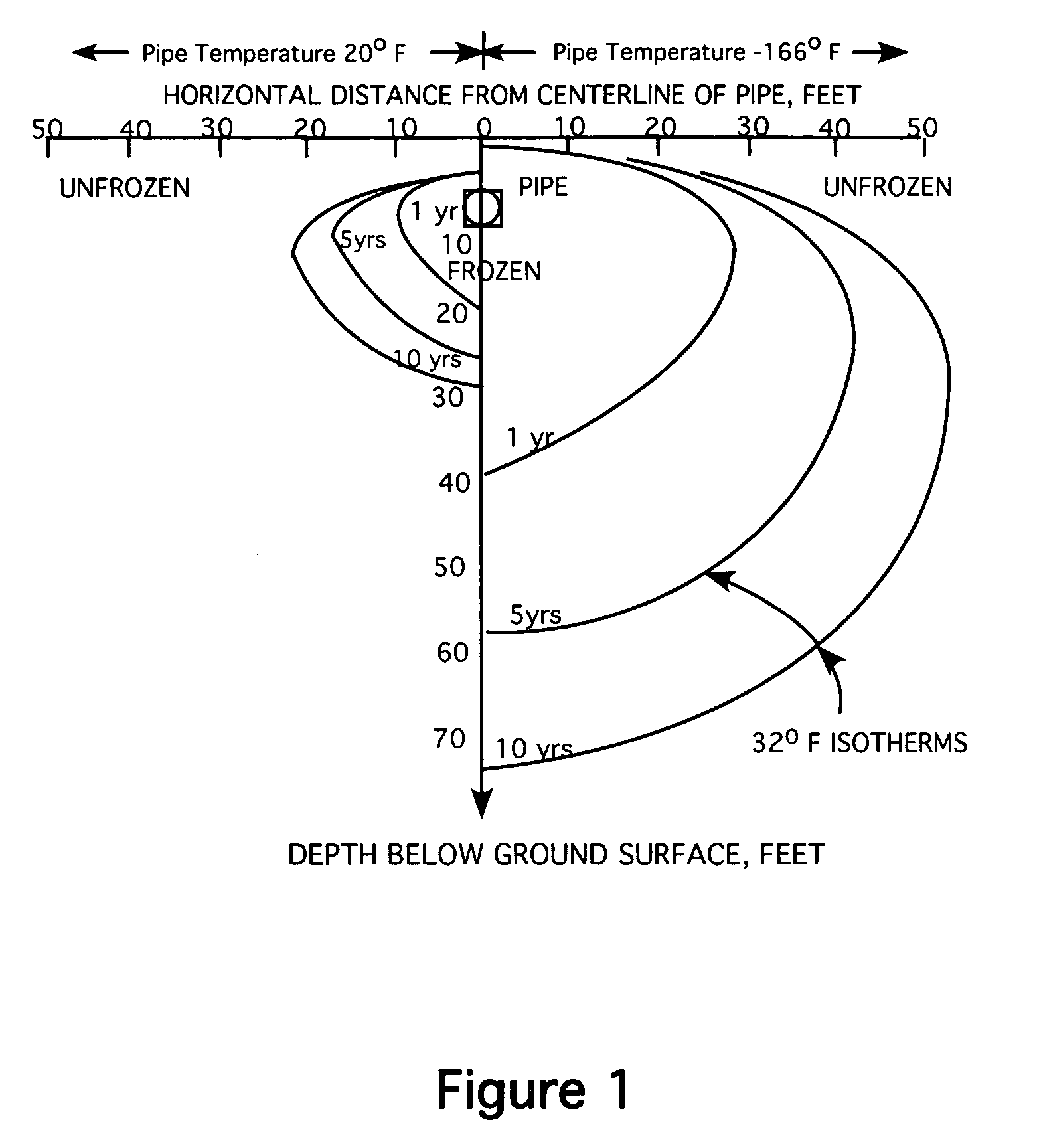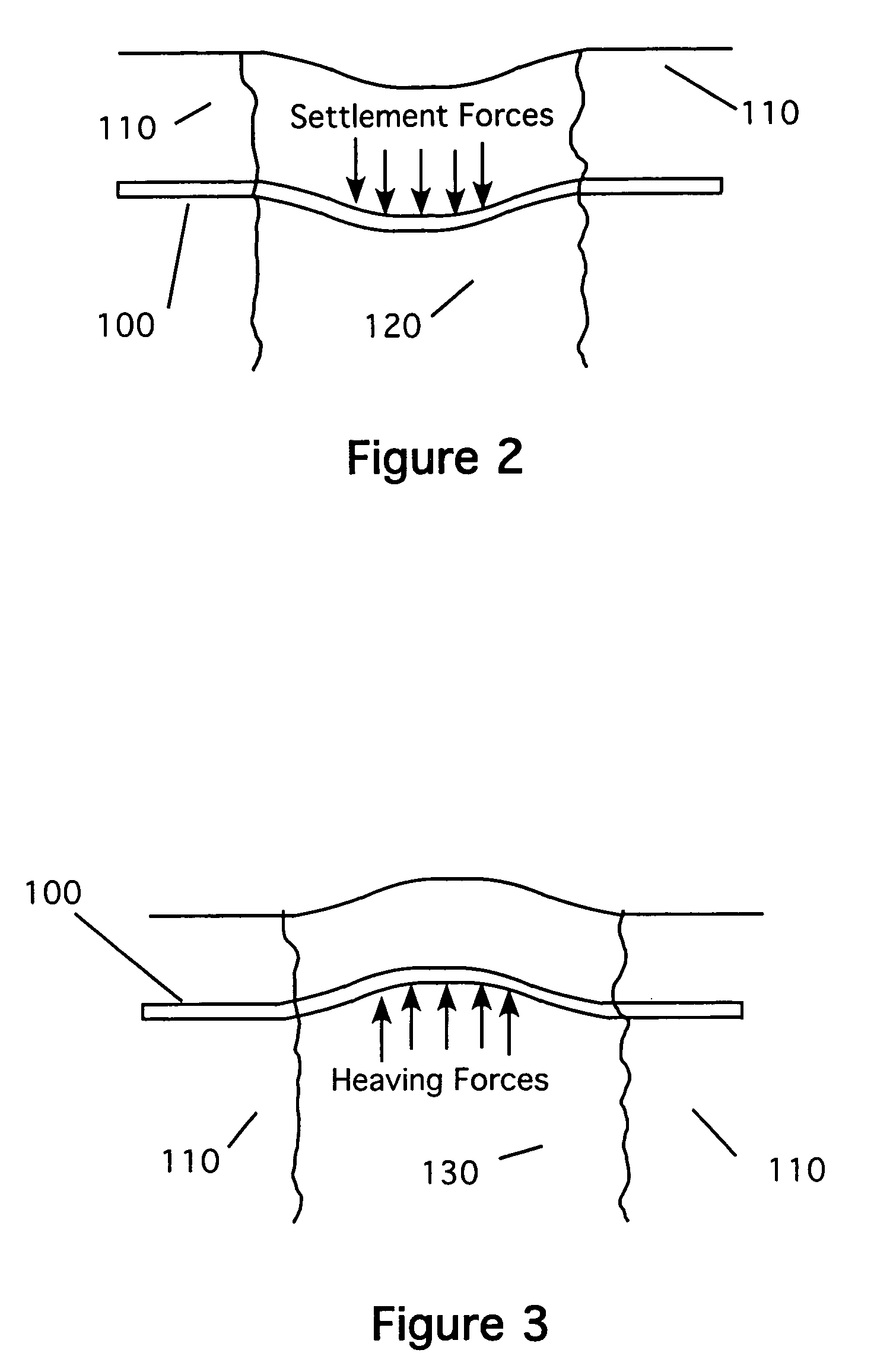Method of preventing frost heave stress concentrations in chilled buried pipelines
a technology of frost heave and buried pipelines, which is applied in the field of underground pipelines, can solve the problems of high heterogeneity of soils, complicated operation design, and constraining the design of buried pipelines
- Summary
- Abstract
- Description
- Claims
- Application Information
AI Technical Summary
Benefits of technology
Problems solved by technology
Method used
Image
Examples
example
[0027]FIG. 7 is a schematic diagram used to demonstrate the calculation of the quantities of CMA that are needed for an assumed section of a buried natural gas pipeline that is chilled to a minimum temperature of minus 12 degrees centigrade (10 degrees F). The dimensions shown in FIG. 7 are exemplary. As shown, the volume of classified fill within each linear foot of the flexible envelope (that is, contained within the geotextile fabric) is 88 cubic feet (2.5 cubic meters) (8 ft (2.44 m) (w)×11 ft (3.35 m) (h)×1 ft (0.305 m) (L)). The volume occupied by the pipe per linear foot is 12.6 cubic feet (0.357 cubic meters) (3.1416×2 ft (0.607 m)×2 ft (0.607 m)). Thus, the net volume
per linear foot (lineal meter) is 75.4 cubic feet (2.14 cubic meters). For this example, it is assumed that the volume of voids is approximately 10 percent of the total volume or about 8 cubic feet (0.227 cubic meters). In order to reduce the freezing point of water at saturation to minus 12 degrees centigrad...
PUM
 Login to View More
Login to View More Abstract
Description
Claims
Application Information
 Login to View More
Login to View More - R&D
- Intellectual Property
- Life Sciences
- Materials
- Tech Scout
- Unparalleled Data Quality
- Higher Quality Content
- 60% Fewer Hallucinations
Browse by: Latest US Patents, China's latest patents, Technical Efficacy Thesaurus, Application Domain, Technology Topic, Popular Technical Reports.
© 2025 PatSnap. All rights reserved.Legal|Privacy policy|Modern Slavery Act Transparency Statement|Sitemap|About US| Contact US: help@patsnap.com



